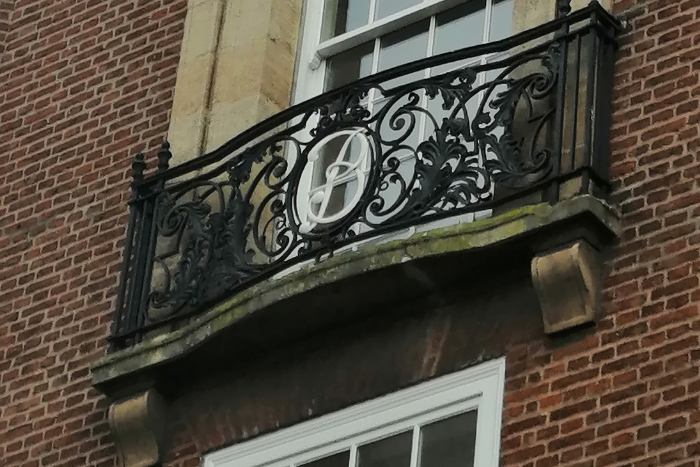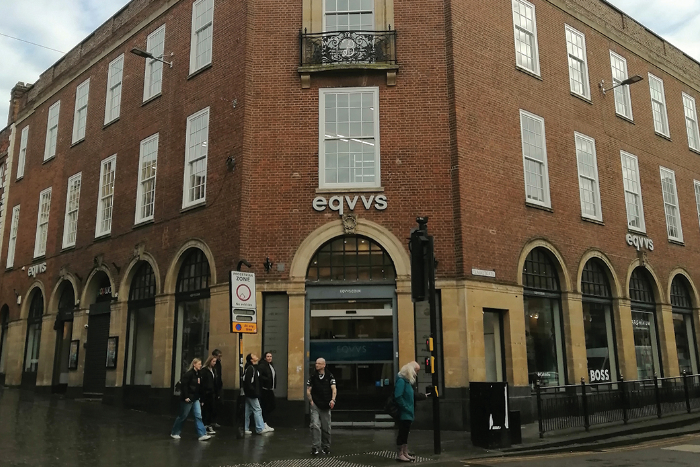
Big Boots to fill?
Andrew Walker of The Survey of Lincoln considers a conspicuous empty shop on the city’s High Street.
Lincoln’s retail centre is fortunate to have a high occupancy rate compared to those of many other towns and cities.
However, currently, there is a substantial vacant retail unit at the heart of the city centre – 311-12 High Street, formerly the home of Boots, which moved across the street in 2019 to premises left empty by the closure three years earlier of British Home Stores, at 196-99 High Street.
Boots the Chemist was one of the earliest chain stores to arrive in Lincoln. The company’s first store here opened in 1884. By 1888, there were two Boots outlets, one at 153 High Street, St Mark’s, and the other, more centrally located, at 281 High Street on the corner of Butchery Street (now part of Clasketgate).
These two shops, together with a store in Sheffield, were the first Boots retail outlets to open outside Nottingham, the company’s home city.
The store at 281 High Street grew substantially, becoming much more than just a chemist’s. The old premises were demolished and replaced with a new neo-Georgian store, with a phased opening in 1925 and 1926, which was designed by the eminent architect P.R. Morley Horder.
The shop, with a customer lift, toilet facilities and telephone booths, accommodated, amongst other departments, a lending library and an elegant and substantial café on the top floor, with seats for 200. The café could be converted into a ballroom, with space for 150 dancers.
Although this building, at what became known as ‘Boots Corner’, has not housed the chemists for over 50 years, Jesse Boot’s initials are still visible on the wrought iron, second-floor balcony. The clothes shop ‘Equus’ currently occupies the site.
The move to 311-12 High Street, a busier part of the city centre, took place in the early 1970s, with the store opening in July 1973. The building, like its previous High Street home, was designed by the company’s own architects, though the style was radically different.
By the 1970s, instead of favouring a conservative-looking brick exterior, the company opted for a fashionable ‘blind façade’, constructed in a concrete aggregate, which was much favoured by the company as a cladding material for its buildings during the 1960s and early 1970s.
The lack of lighting on the first floor meant a reliance on artificial lighting and ventilation systems. In its local advertising of the new store, Boots declared that it was ‘big, bright and beautiful’, and its various departments sought to cater for ‘your way of life’.
The aesthetic sensibilities of the company’s architects in the 1970s, like those of some other retail chains at the time, seemed to be pay little heed to the townscape in which their new stores were being built.
With its move across the road to fill the void left by the demise of British Home Stores, for the first time since the mid-1920s, Boots’ flagship Lincoln store has not been designed specifically for the company.
Instead, Boots occupied a building tailored for the needs of British Home Stores, which had opened in 1966 to replace the department store’s earlier building on the site.
Now that Boots occupies its third city-centre home, it remains to be seen what will happen to the site it has most recently vacated.
To find out more about The Survey of Lincoln and its work, see www.thesurveyoflincoln.co.uk, and for more information about buildings associated with the city’s retail trade, see The Survey’s volume ‘Shops and Shopping in Lincoln: A History’.
Top picture shoes the insignia on the first Boots’ premises in Lincoln.
Below is the old ‘Boots’ corner and bottom is the building at 311-312 High Street that was the retailer’s second home in the city. It has been out of use since 2019 and it’s been almost a year since Lane7 was granted planning permission to turn it into a bowling alley.


